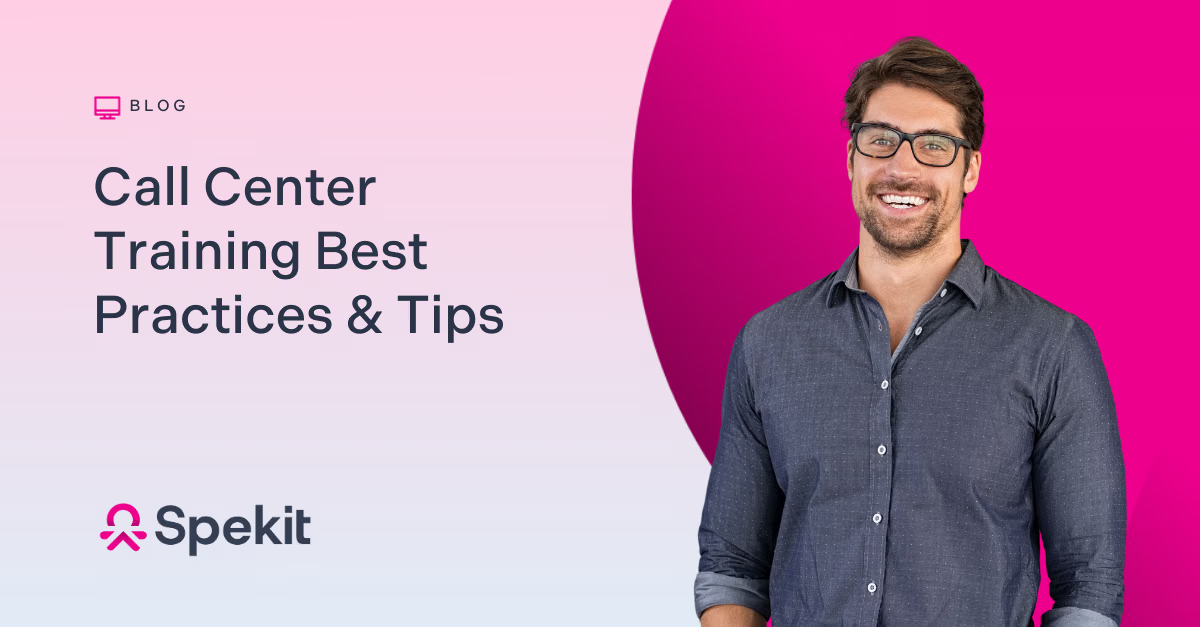Call centers are the frontline of customer service across almost every industry. They’re the first point of contact for customers seeking assistance, information, or solutions to their problems.
To ensure that customer interactions are efficient, constructive, and in line with company standards, effective call center training cannot be overlooked. A recent report revealed that nearly 97% of consumers and 98% of contact center managers agree that customer service interactions are crucial in determining whether consumers remain loyal to a brand. This means efficient and effective call center training is critical to businesses looking to reduce churn and improve their bottom line.
Efficient and effective call center training is critical to businesses looking to reduce churn and improve their bottom line.
This article will dive deeper into how call center training is changing, why it’s essential for organizational growth, and some of the best practices that make up an effective training program.
Let’s get started.
Table of Contents
- What is Call Center Training
- The Importance of Training in Call Centers
- Better Agent Performance and Retention
- Improved Customer Experience
- Higher Efficiency and Productivity
- Call Center Training Best Practices
- 1. Offer Live and Virtual Training
- 2. Use the Right Training Software Tech Stack
- 3. Implement Just-in-Time Learning
- Meet Spekit’s Just-in-Time Learning Platform
- 4. Include Incentives and Gamification
- 5. Prioritize Revenue Generating Activities
- 6. Don’t Forget About Soft Skills
- 7. Provide a Self-Serve Knowledge Base
- 8. Track and Optimize Contact Center KPIs
- How to Optimize Call Center Training with Data
- Improve Your Call Center Training
What is Call Center Training
Call center training is a structured and continuous process to equip agents, also known as customer service representatives (CSRs), with the skills, knowledge, and tools required to deliver exceptional customer experiences. It covers various aspects that are designed to improve the quality of customer interactions and optimize operational efficiency.
Some of the key components of a robust call center training program include:
- Product and Service Knowledge: Agents must understand the company’s products or services in-depth. They should be able to answer customer inquiries accurately and provide informed solutions.
- Communication Skills: Agents should learn to actively listen to customers, empathize with their concerns, convey information clearly and courteously, and adapt communication to suit different customer profiles and situations.
- Problem-Solving: Agents and Customer Service Representatives are often confronted with complex issues. Training programs teach reps how to analyze problems, identify solutions, and make decisions quickly while adhering to company policies.
- Customer Service Etiquette: Agents and CSRs should be trained to maintain a positive attitude, even when dealing with difficult or irate customers. They should learn techniques to defuse tense situations and turn them into positive experiences.
- Systems and Technology: Call centers rely on various software and technology tools. Training should include familiarizing agents with these systems to access customer information, track interactions, and provide efficient support.
- Compliance and Regulations: Depending on the industry, agents may need to adhere to specific regulations and compliance standards. Training should ensure they understand and follow these standard rules.
The Importance of Training in Call Centers
Let us explore the pivotal role that training plays in the success of call centers.

Better Agent Performance and Retention
Call centers can experience attrition and turnover rates of up to 45%, which can be attributed to factors ranging from burnout to lack of proper tools to overcome customer experience challenges. Well-trained agents feel more competent and assured when assisting customers, translating into a better customer experience and reduced turnover rates.
Agents who receive proper training are more likely to stay with the company because they feel valued. This reduces recruitment and onboarding costs and maintains a stable, experienced workforce. In addition, ongoing training keeps agents up-to-date with changing customer expectations and industry trends.
Improved Customer Experience
Call center training ensures that agents resolve issues on the first call, eliminating customers needing to follow up or escalate their concerns. First-contact resolution reduces customer effort and frustration, which increases satisfaction.
The 2022 Zendesk CX trends report shows that 81% of customers affirm that a positive customer service experience increases the likelihood of them making a repeat purchase. Well-trained agents also learn how to connect with customers on a personal level, showing genuine concern for their needs.
The 2022 Zendesk CX trends report shows that 81% of customers affirm that a positive customer service experience increases the likelihood of them making a repeat purchase.
Consistency in customer service delivery across the board reinforces a customer-centered reputation for the business, increases revenue, and fosters customer trust and loyalty.
Higher Efficiency and Productivity
Customer service has undergone a seismic shift in many areas since the pandemic. Now, 39% of consumers display reduced patience compared to their pre-pandemic levels. This means CX teams must solve customer issues quickly, efficiently, and professionally.
A good call center training system helps agents avoid errors and costly re-work. Agents well-versed in their tasks are less likely to make mistakes, reducing the need for call corrections or follow-up calls. This streamlines operations and frees up senior staff to focus on complex issues.
A well-trained workforce also allows call centers to allocate resources better. Call center managers can match agent skills with specific call types, ensuring that the right agent handles the appropriate inquiry.
Call Center Training Best Practices
Staying ahead of the curve in call center operations requires implementing strategies that optimize training programs. This section dives into some best practices to consider.
1. Offer Live and Virtual Training

Traditional live training sessions in a classroom or on-site provide hands-on experiences for new agents. They offer the advantage of immediate feedback, face-to-face interaction with trainers, and the opportunity for trainees to ask questions in real-time.
Virtual training, on the other hand, allows flexibility and scalability. It’s conducted remotely, making it suitable for teams scattered worldwide or accommodating agents’ diverse schedules. It often employs webinars, video conferencing, and e-learning platforms to deliver content. Ideally, it would be best to leverage the strengths of both methods.
Initial onboarding can include live sessions for building foundational knowledge, while virtual training modules can be used for continuous learning and skill enhancement.
Both of these training methods can effectively introduce a broader topic or category. However, it’s important to ensure you’re then reinforcing that training when the agents return to their day-to-day workflows. Studies suggest humans forget approximately 50% of new information within an hour after training. And, that percentage goes up to an average of 70% within 24 hours. Without a plan for reinforcing information, it’s safe to assume most of what you trained on will be forgotten.
Studies suggest humans forget approximately 50% of new information within an hour after training.
2. Use the Right Training Software Tech Stack
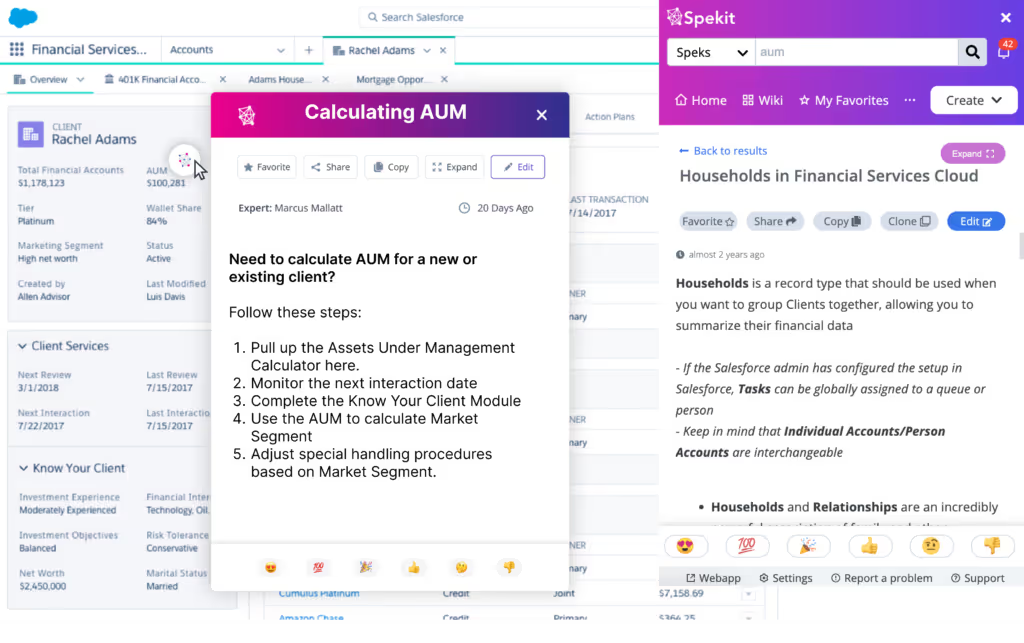
Selecting the right tech stack involves picking a platform that offers the scalability to accommodate a growing workforce and evolving training needs without disruption. The right solution should also provide valuable data and analytics that allow managers to track agent progress and the effectiveness of training modules. Cloud-based software also enables virtual teams to access training materials from anywhere they are.
Some examples of training software tech stack are:
- Revenue enablement platforms: Provides training materials, product information, sales scripts, and other resources that empower CSRs to have more informed and persuasive customer interactions. They ensure that agents are well-prepared to upsell, cross-sell, and contribute to revenue generation.
- Simulation Software: Simulation tools allow agents to practice real-world scenarios in a controlled environment. This is especially beneficial for call centers where handling customer inquiries and solving issues is a key task. Simulations help agents refine their skills without impacting actual customer interactions.
- Communication Tools: Collaboration and communication tools facilitate interaction among trainers, trainees, and peers. Features like chat, forums, and video conferencing help create a collaborative learning environment where agents can seek guidance and share their knowledge.
- Feedback and Assessment Tools: Implementing tools for assessments and feedback collection is crucial. These tools enable trainers to evaluate agent performance and tailor training programs accordingly. Regular assessments ensure that agents are continually improving their skills.
- Analytics and Reporting Software: Utilizing analytics tools provides insights into training effectiveness. It helps identify areas where agents may struggle and additional training is required. These insights guide ongoing training efforts and improve overall training outcomes.
Incorporating the right training software tech stack into your call center training enables your team to stay competitive and continually deliver exceptional customer service.
3. Implement Just-in-Time Learning
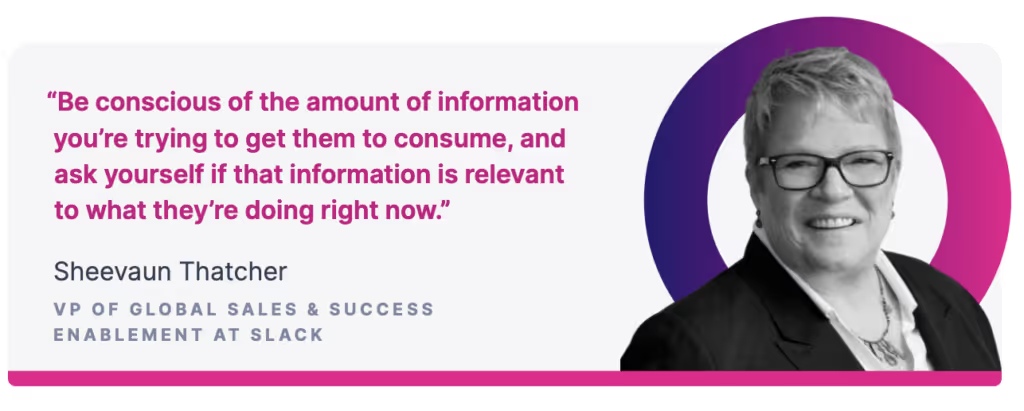
Spekit enables agents and Customer Services Representatives with just-in-time learning
Just-in-time learning is a training approach that focuses on delivering relevant information and skills when required to perform a specific task. Unlike traditional training that may involve lengthy courses or onboarding sessions, just-in-time learning is concise, targeted, and immediately applicable.
This method is important because studies have found that if you take 10 minutes to revisit what you’ve learned within the first 24 hours, you can nearly guarantee that you’ll remember it all. It gets even better as time goes on. By the 30-day mark, it only takes a quick two to four-minute refresher. It’s like you’re training your brain to remember things effortlessly.
Meet Spekit’s Just-in-Time Learning Platform
The Spekit just-in-time learning platform is a game-changer for call centers. The platform offers pre-made playbooks and content tailored to standard support processes and call center scenarios. The platform provides bite-sized knowledge directly within the workflow of customer service agents and one-click access to up-to-date training and learning resources. Agents can swiftly address customer inquiries without wasting time searching for information and switching between multiple apps and software.
Spekit also provides in-depth analytics that is invaluable in assessing the effectiveness of content and playbooks. Call center managers can readily track content usage, measure its impact on CSR performance, and identify areas for improvement. The ability to make real-time changes to training and playbooks also aligns with the dynamic nature of customer support, allowing for swift adaptations as call center strategies evolve.
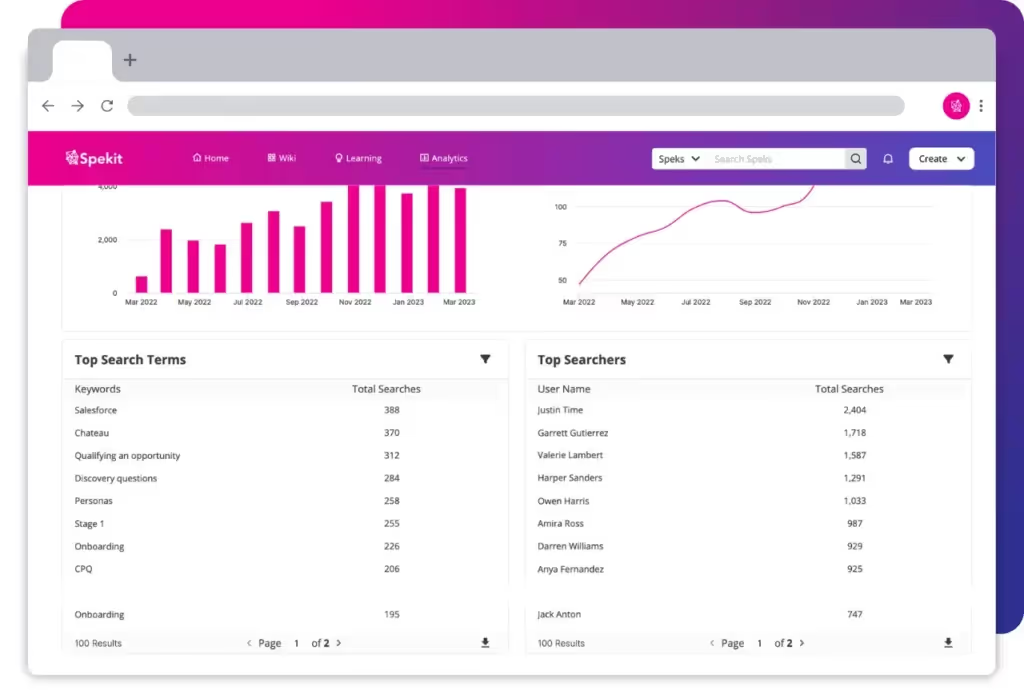
Some of the results Spekit has achieved so far:
- Spekit led to a 20% increase in quality assurance scores at NuVision
- Road Scholar experienced a 70% increase in deal save rates when they used Spekit
- Hobsons witnessed a 35% reduction in support tickets thanks to Spekit
- Additionally, Spekit enables agents to ramp up 50% faster by providing knowledge accessible and reinforced in their daily workflows
4. Include Incentives and Gamification

Rewarding call center agents for exceptional performance is a powerful motivator. Incentives can be bonuses, recognition, or other tangible rewards. These rewards boost agent morale and drive them to excel in their roles. McKinsey’s research indicates that agents who experience happiness and engagement are 3.3 times more inclined to feel empowered to address and resolve customer issues.
Agents who experience happiness and engagement are 3.3 times more inclined to feel empowered to address and resolve customer issues.
MCKINSEY
Incentives should be tied to specific performance metrics, such as customer satisfaction ratings or service KPIs. Also, involving game elements like points, badges, and leaderboards transforms learning into an engaging and competitive experience. Agents earn rewards or recognition as they achieve training milestones or surpass performance targets. Gamification fosters a sense of accomplishment and friendly competition among agents.
5. Prioritize Revenue Generating Activities
Recently, 54% of agents believe that management regards customer service and support as a source of revenue rather than a business expense. Beyond resolving customer issues, call center agents can proactively generate revenue by identifying upsell or cross-sell opportunities during customer interactions.
Training programs should equip agents with the skills and knowledge to recognize these opportunities and make relevant product or service recommendations. Agents can also be trained to identify potential leads during customer conversations. They can collect valuable information and pass it on to the sales team for further follow-up — especially when supported by AI software for sales that delivers real-time prompts and training in the flow of work.
6. Don’t Forget About Soft Skills

Empathy is a cornerstone of exceptional customer service. Training should focus on nurturing agents’ ability to understand and relate to customers’ concerns. Agents who actively listen and convey empathy build stronger customer relationships and enhance the overall experience.
An agent will inevitably find themselves in a situation with a dissatisfied customer; therefore, programs should include conflict de-escalation techniques and finding mutually satisfactory solutions.
7. Provide a Self-Serve Knowledge Base
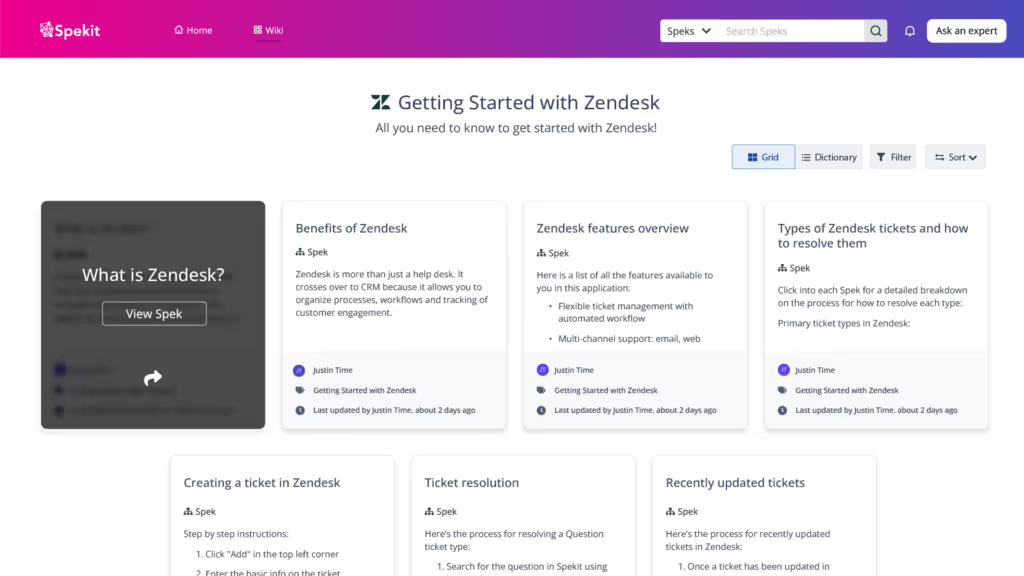
Content documentation in knowledge base systems centralizes information for easy access. Agents can quickly retrieve product information, sales documentation, Frequently Asked Questions (FAQs), and troubleshooting guides. A well-structured knowledge base reduces agents’ reliance on memory and ensures shorter call durations and consistent, accurate responses to customer inquiries.
Regularly updating the knowledge base also keeps information current and aligned with the evolving needs of customers and the business. Agents should be encouraged to contribute to its growth by documenting their insights.
8. Track and Optimize Contact Center KPIs

Key Performance Indicators (KPIs) are measurable metrics that provide valuable insights into your call center’s performance and its agents.
Some key contact center KPIs to track include:
- Average Handle Time (AHT): AHT measures the average time it takes for an agent to handle a customer interaction, including talk time, hold time, and after-call work. Monitoring AHT helps assess call center efficiency and agent productivity.
- First Call Resolution (FCR): FCR measures the percentage of customer inquiries resolved on the first contact without requiring follow-up interactions. High FCR rates indicate effective training and a positive customer experience.
- Customer Satisfaction (CSAT): CSAT surveys measure customer satisfaction with the service they receive. Regularly tracking CSAT scores can help provide feedback on the quality of customer interactions.
- Net Promoter Score (NPS): NPS measures the likelihood of customers recommending a company’s products or services to others. Agents who deliver exceptional service are more likely to generate higher NPS scores.
- Quality Assurance (QA) Scores: QA scores are based on evaluations of recorded customer interactions. These scores assess agents’ adherence to scripts, company policies, and overall service quality. Training programs can use QA feedback to address agent weaknesses and reinforce best practices.
- Agent Attrition Rate: High agent turnover can be costly and disruptive. Tracking attrition rates helps gauge the success of training programs in retaining talent. Training should address job satisfaction, skill development, and career growth to reduce attrition.
- Abandonment Rate: This metric tracks the number of callers hanging up before reaching an agent. High abandonment rates can indicate long wait times or inefficient routing. Training can address call routing and response time strategies.
How to Optimize Call Center Training with Data
Once call centers have tracked these KPIs, they can use the data to optimize training in several ways:
- Identifying Training Needs: KPIs highlight areas where additional training may be required. For example, if FCR rates are low or AHT is high, it could indicate that agents need more training in problem-solving or product knowledge. Identifying these needs allows you to tailor training programs to address specific weaknesses.
- Data-Driven Decisions: When you base your training and operational decisions on data-backed insights, you’re more likely to achieve consistent and accurate results. Data-driven insights help you save time and costs from tracking or optimizing KPIs manually.
- Goal Setting and Benchmarking: KPIs help set realistic performance goals and benchmarks. You can establish targets for each metric and measure your call center’s progress toward these goals.
- Alignment with Business Objectives: KPIs should align with your organization’s broader business objectives. For example, if a primary business goal is to increase customer retention, KPIs related to customer satisfaction and churn rates become especially relevant.
Improve Your Call Center Training
Implementing proper call center training is a strategic investment that can transform your entire call center operations and drive customer satisfaction. Utilizing the power of advanced technologies, implementing the right call center training strategies, and promoting a positive and adaptable workplace culture can significantly boost your team’s productivity.
One of the best solutions for advancing your call center training?
Spekit. Spekit eliminates lost time by delivering bite-sized knowledge and training directly into your agent’s flow of work, empowering them with every answer at their fingertips. No more digging through Sharepoint, PDFs, or lengthy training documents. Just the knowledge agents need to reduce response times, increase customer satisfaction, and drive upsells — where they need it.
Spekit enables call centers to:
- Improve first-call resolution and handling times by providing real-time guidance to agents.
- Reduce support inquiries and questions by effectively sharing knowledge throughout the team.
- Speed up the hiring and onboarding process for new CSRs.
- Provide agents with instant access to marketing resources, messaging, and sales playbooks within their workflow.
- Gain opportunities to up-sell and cross-sell without disrupting daily productivity.
Let’s make your call center more effective together.

